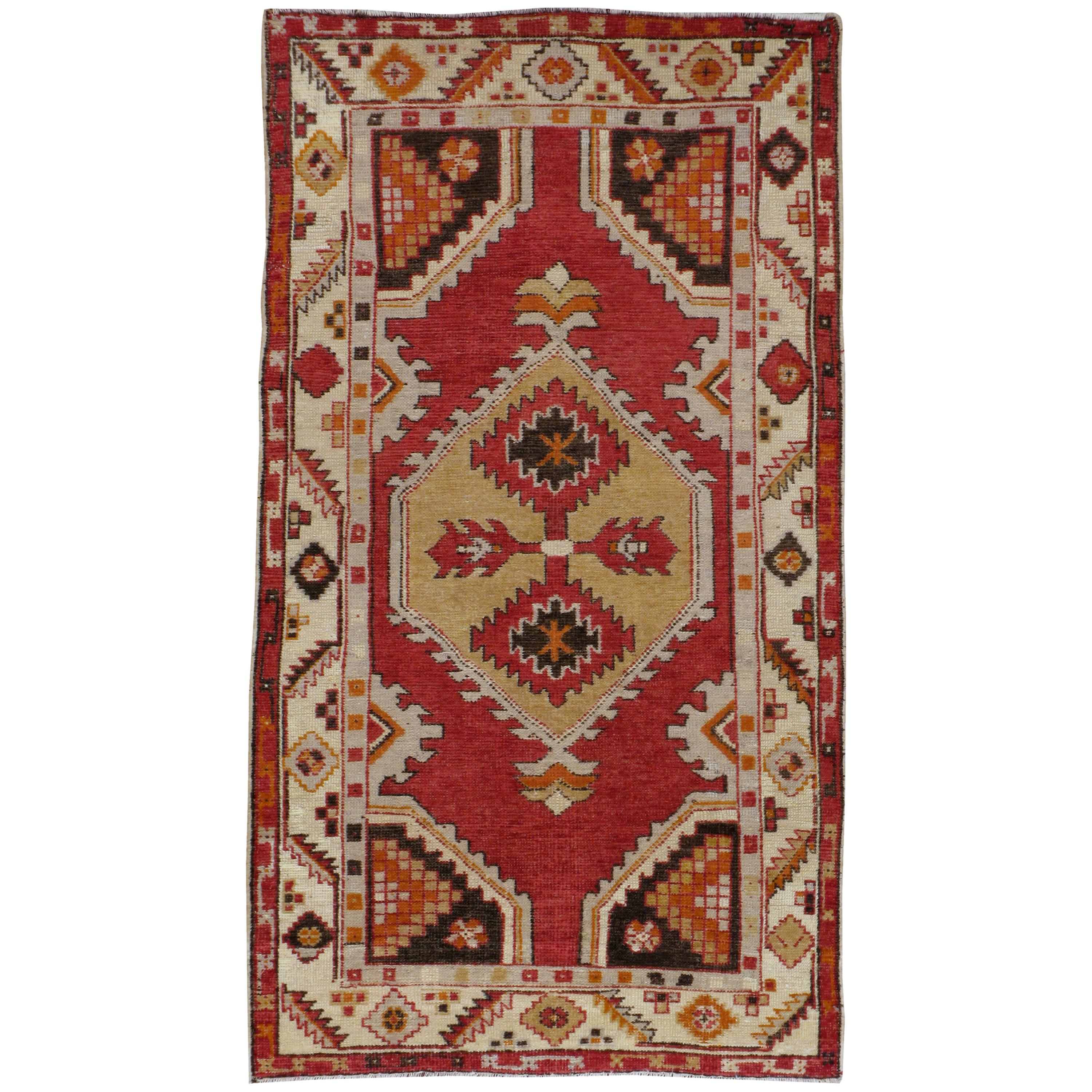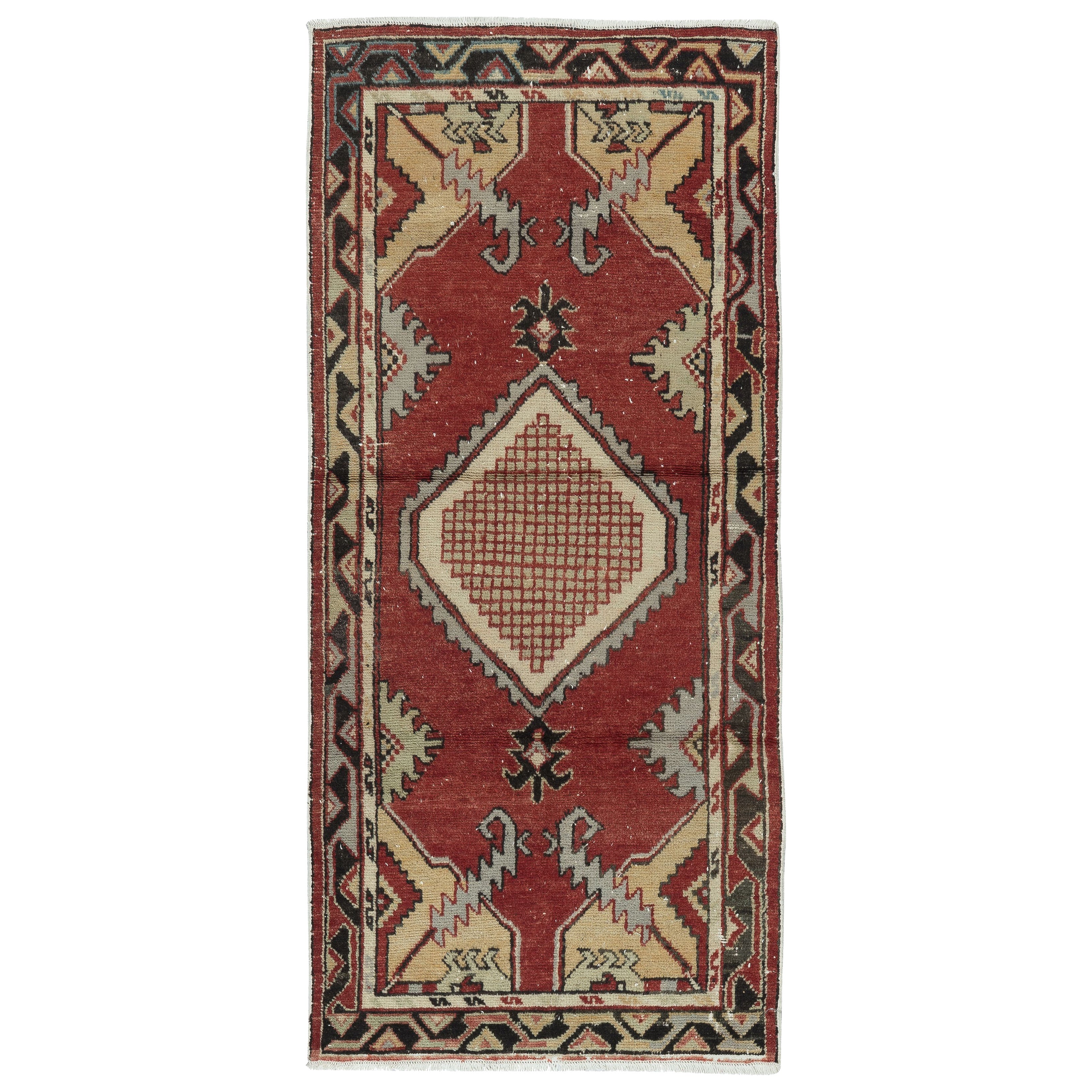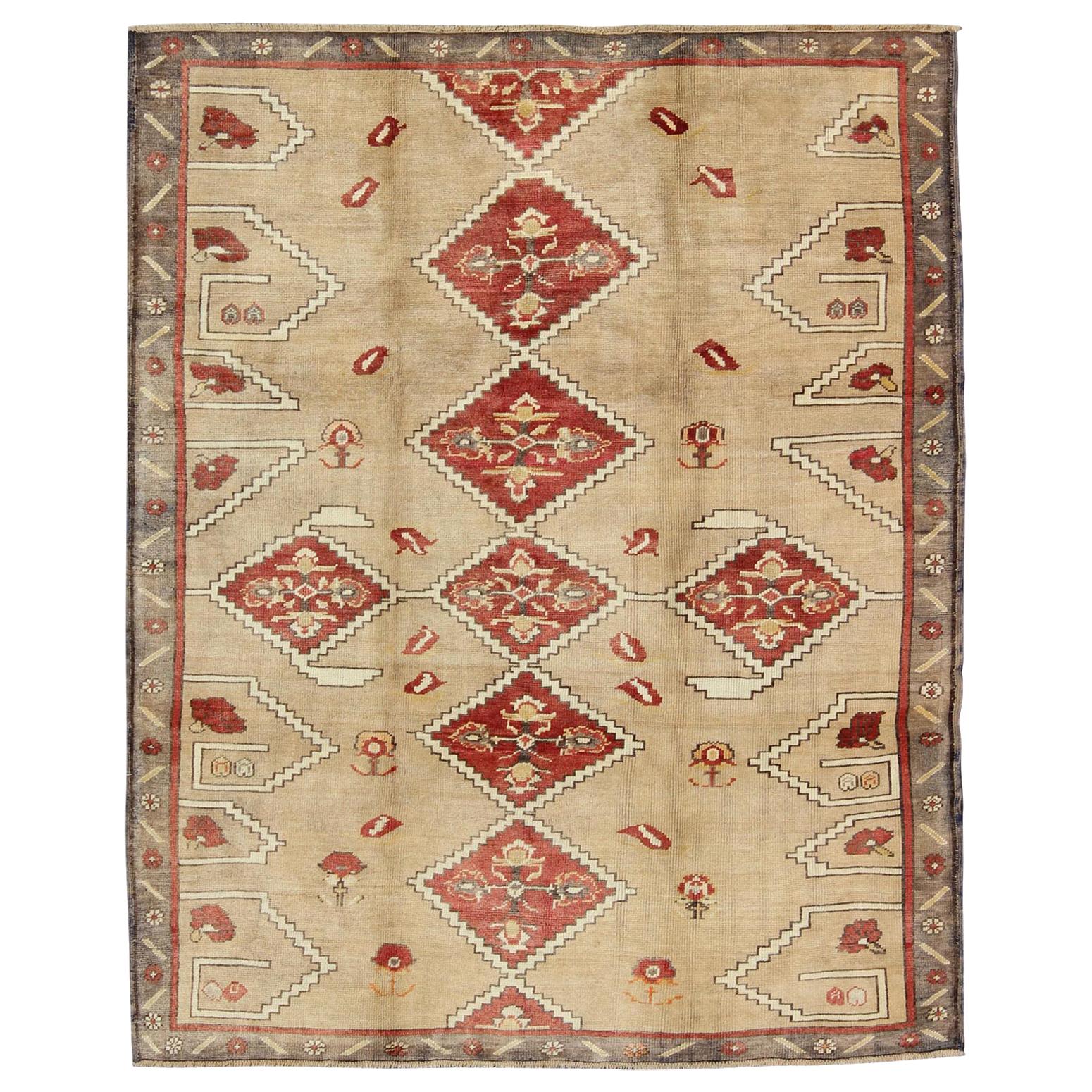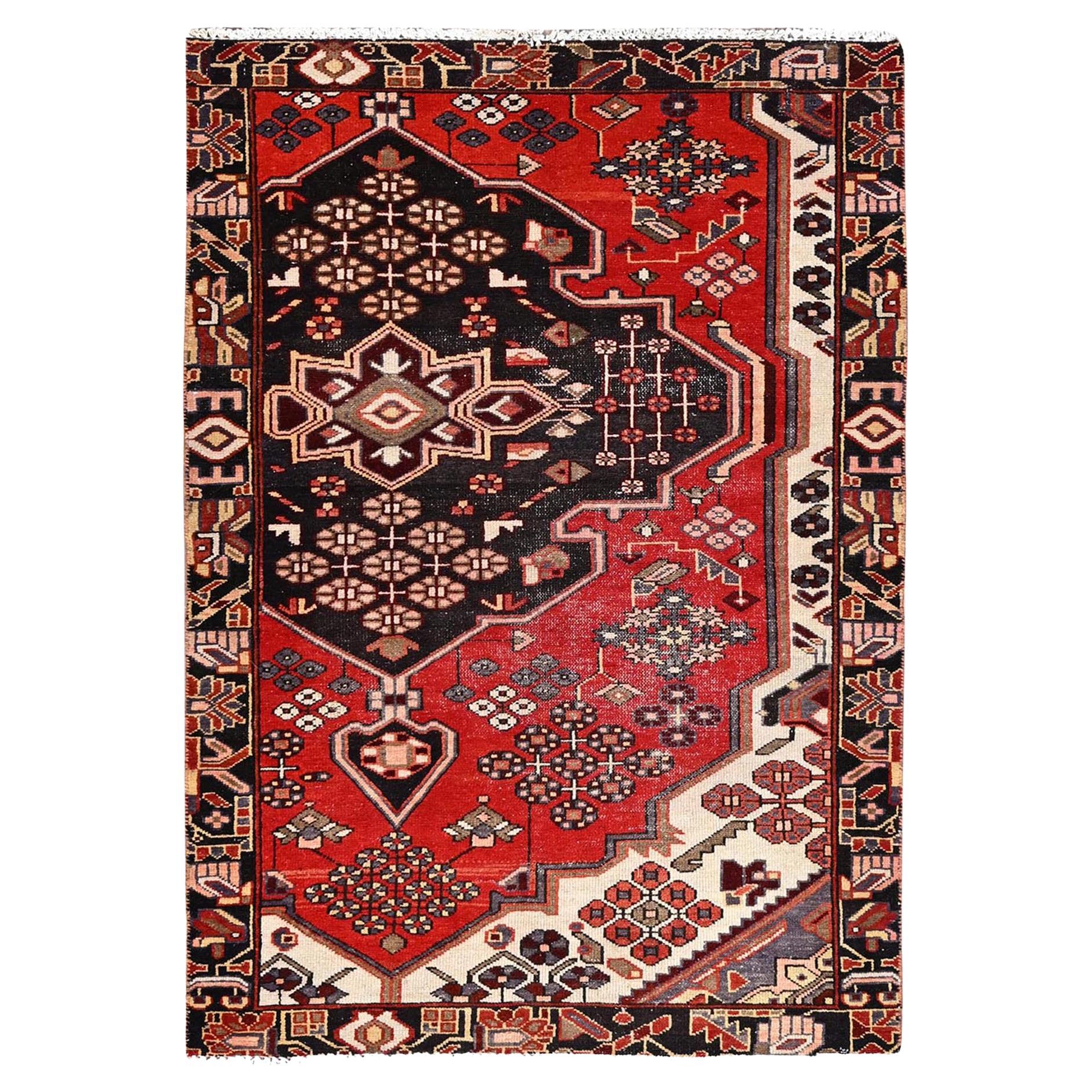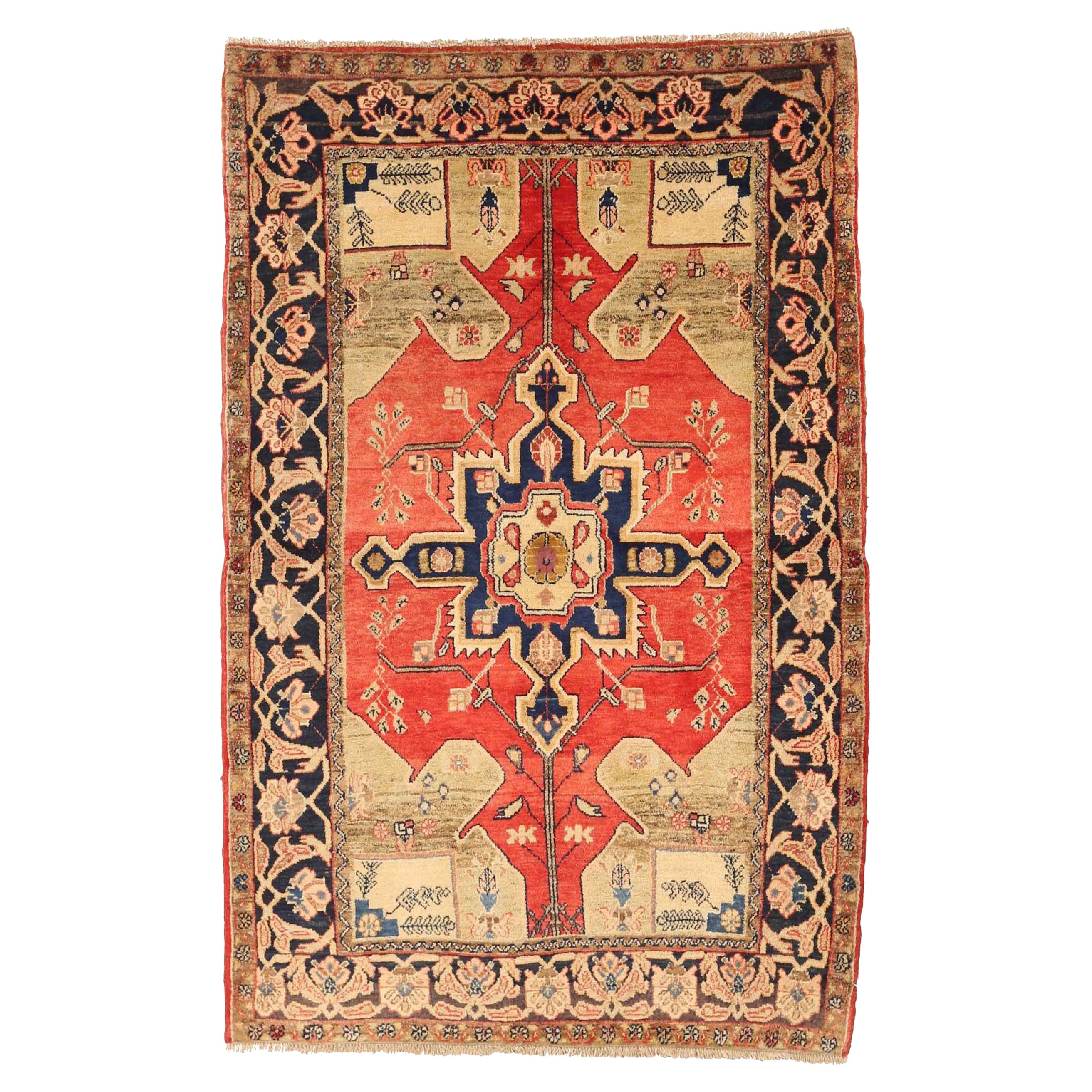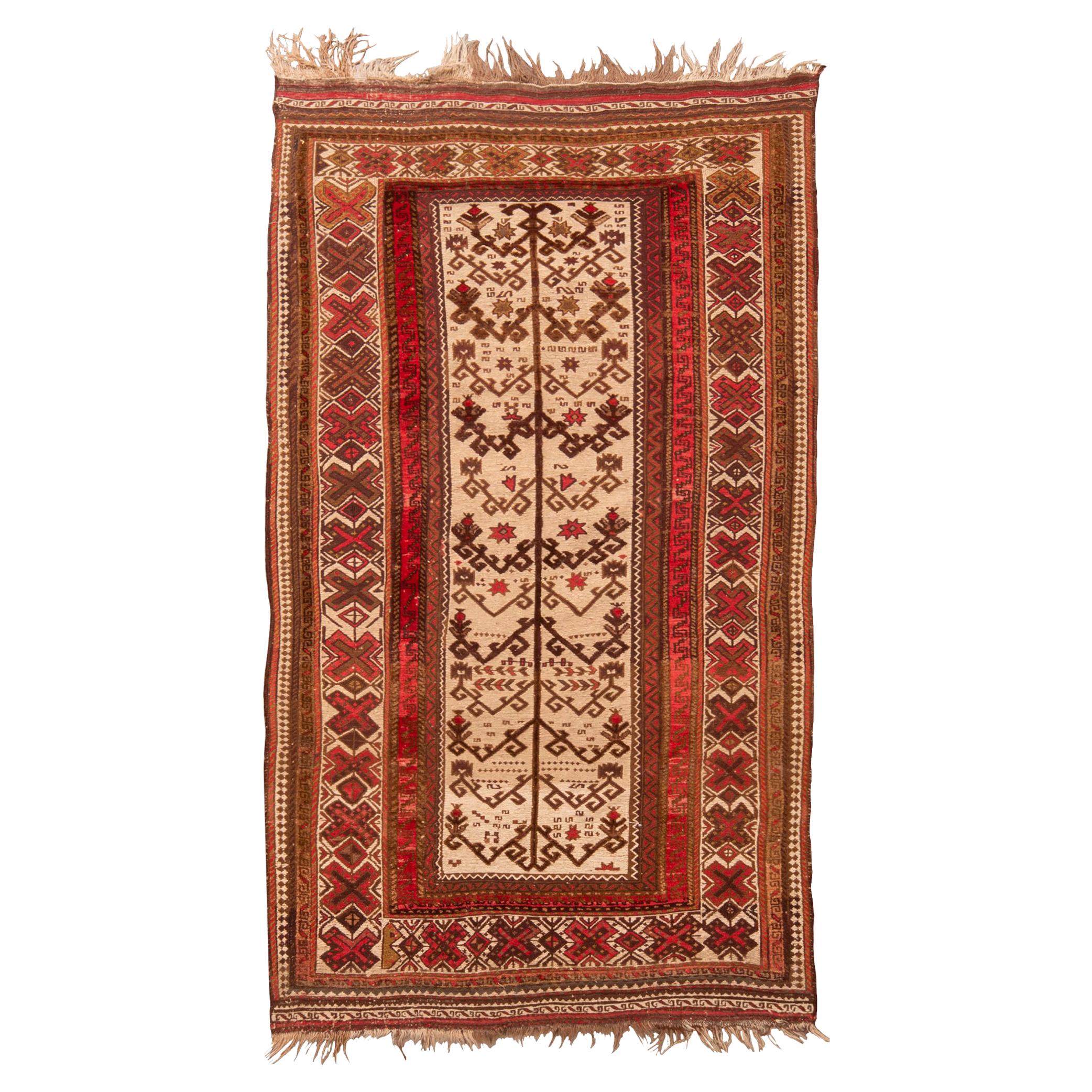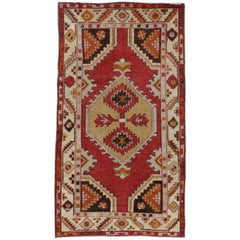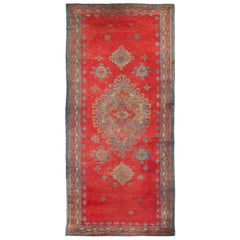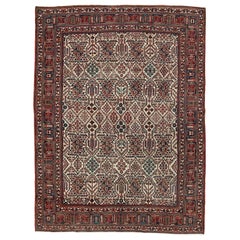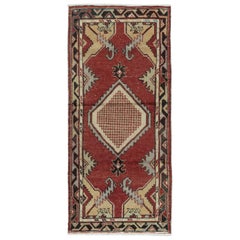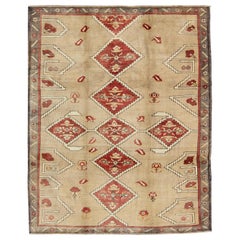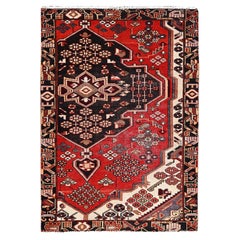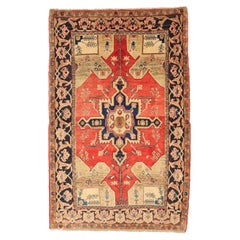Items Similar to Rustic Early 20th Century Handmade Persian Kurd Throw Rug in Red & Cream
Want more images or videos?
Request additional images or videos from the seller
1 of 9
Rustic Early 20th Century Handmade Persian Kurd Throw Rug in Red & Cream
$3,900
$4,87520% Off
£2,945.69
£3,682.1120% Off
€3,404.36
€4,255.4620% Off
CA$5,470.35
CA$6,837.9320% Off
A$6,084.43
A$7,605.5420% Off
CHF 3,184.46
CHF 3,980.5820% Off
MX$74,209.99
MX$92,762.4820% Off
NOK 40,013.91
NOK 50,017.3820% Off
SEK 37,638.24
SEK 47,047.8120% Off
DKK 25,410.27
DKK 31,762.8420% Off
About the Item
An antique Persian Kurd throw rug handmade during the early 20th century in shades of red and cream with an overall rustic appeal with its flat-weave Kilim ends and braided fringes.
Measures: 3' 10" x 5' 10"
Persian rugs & carpets:
Persia (Iran) is a moderately large country with a very long history and an enormous art/craft/industry built around the handmade carpet. Until the discovery of oil, carpets were the largest Persian export. The craft goes back to ancient times, although the history is more broken than one might expect or desire. The Pazyryk rug dates from the 3rd/4th century B.C.E., but really no carpets before 1500 or so survive in any sort of numbers. Persia is an upland plateau region, semi-arid in many places, verdantly fertile in others, and a perfect base for a pastoral economy. Sheep beget wool and wool begets rugs. Lots of rugs. Almost every province, city, town, village and tribe made or makes rugs with distinctive local characteristics. The rug literature identifies many of these, but thousands of more locales and tribal segments cannot be connected to known examples and vice versa.
There are essentially three (or four) distinct rug genres: the urban workshop formal rug; the village informal type; and the tribal/nomadic really informal kind. A fourth type is the royal or imperial carpet, woven for the Shah in court ateliers. Workshop, village and tribal rugs will be considered in more depth in specialized essays. Persian rugs must be woven in Persia. Being “in the style of….” does not count. On the other hand, the universally high standards of Persian rug weaving have raised the levels of carpet craftsmanship all over the rug belt. Everyone wants to be Persian, at least where rugs are concerned. “Persian rug” and “Oriental rug” used to be synonymous.
Persian rugs come in all grades. From ultra-coarse tribal rugs to incredibly fine silks from Tabriz and planned urban Isfahan pieces. Persian rugs also come in all sizes. From miniature throw rugs to pieces as large as a parking lot. In weaves from 20 knots per square inch to 2000; in wool, silk, combinations thereof, and more modern synthetic and natural fibers. With natural and synthetic dyes. Most Persian weavers are women, in all contexts, but everybody can weave rugs. The Great Persian Carpet Revival began in the 1870s and the industry mushroomed, with many cities, villages, and tribes taking up or radically expanding rug weaving, from an occasional domestic art to a full-time professional industry. For example, Tehran, the capital, developed an industry-oriented exclusively toward very fine, totally designed carpets for the nascent Persian upper classes. A few rugs were exported, but most went to the wealthy. But this industry did not last past the Interwar period. Other cities have been weaving rugs for centuries. Tabriz, an early capital, has been weaving fine rugs since the 16th century, and with an interruption, has a flourishing industry today. Other cities developed carpet industries as demand expanded around 1900. Before then, nothing much in Mashad, after that lots of activity. Towns like Nain and Qum started from nowhere in the ’30s and now have crafts wholly oriented toward high-quality pieces.
Villages all around Persia have contributed their share to the middle market, but 20th century (and later) pressures have pushed them toward higher qualities, more in the urban manner. This quality upgrade has also affected the nomadic, tribal weavers. Once weaving a few rugs for themselves for domestic consumption, they are now almost exclusively weaving for the market and in competition with urban rugs. So, they have moved up in quality and style.
The Persian carpet is not a static kind of thing, and neither is the craft supporting it. Forget the “timeless east”. Rugs are objects of fashion, with innovations beginning at or near the top, and working their way downward as styles become accepted. Because rugs are a worldwide export, foreign influences seep or crash in. Whole new genres are imported. The red “American Sarouk” detached floral spray style was imported around 1920 and quickly became popular all over Iran, in scatters, room sizes, and runners. Not Persian, but “Persian”. Now accepted everywhere. Rugs are viewed in Iran as art objects, and artists everywhere have always taken advantage of innovations in techniques and materials. In Persia, this has meant machine-spun threads and yarns, synthetic dyes, and chemical washing manipulation. Some experiments lead to real improvement, some are unfortunate dead ends. Some patterns are wildly successful, others are quickly discarded. The allover Herati, Mina Khani, Boteh (paisley or cone), and Gol Hennai patterns have proliferated, and the medallion and corners layout in its infinite variety is virtually synonymous with Persian rugs. Persian weavers seem to have invented all these and more. Today, very finely woven photographic pictorials are fashionable. Who knows if this innovation will last?
A basically semi-desert land needs color, has to have color in its furnishings and household accouterments. Persian rugs are all about color. All types revel in true color: saturated reds, deep blues, salmon, sky blue, cerulean, yellows from mustard to lemon, near black, cream and ecru and ivory, greens from teal to turquoise. From the Orient comes light, and light means color. A real, genuine Persian rug is richly, complexly colored. Maybe too rich. The carpets of the Chahar Mahal (“Bakhtiari”) area are just too colorful, too saturated for the American market. But they go over just fine in Persia. No blah rugs there. Current American decorating trends have shied away from color, complexity, and boldness. Whether these are “coming back” is a question. They have never gone away in authentic Persian rugs.
A tour of the country shows urban weaving centers around the border edge, with a central spine; village weavers in the countryside surrounding the cities; and tribal weavers filling the blank spots almost everywhere. Some towns have been continuously active for centuries, like Kerman; some with interruptions like Isfahan, Kashan, or Tabriz; and some are relative newcomers like Qum and Nain. The picture is incomplete and much of the 18th and 19th centuries have been long ignored. There are large gaps with no extant specimens. But also, discoveries of previously ignored tribal and village weaving keep coming. New types get explored and the picture fills in. Whatever story you believe, it is probably only a fraction of the rich history of the Persian carpet.
About the Seller
5.0
Platinum Seller
Premium sellers with a 4.7+ rating and 24-hour response times
Established in 1989
1stDibs seller since 2009
599 sales on 1stDibs
Typical response time: <1 hour
- ShippingRetrieving quote...Shipping from: New York, NY
- Return Policy
Authenticity Guarantee
In the unlikely event there’s an issue with an item’s authenticity, contact us within 1 year for a full refund. DetailsMoney-Back Guarantee
If your item is not as described, is damaged in transit, or does not arrive, contact us within 7 days for a full refund. Details24-Hour Cancellation
You have a 24-hour grace period in which to reconsider your purchase, with no questions asked.Vetted Professional Sellers
Our world-class sellers must adhere to strict standards for service and quality, maintaining the integrity of our listings.Price-Match Guarantee
If you find that a seller listed the same item for a lower price elsewhere, we’ll match it.Trusted Global Delivery
Our best-in-class carrier network provides specialized shipping options worldwide, including custom delivery.More From This Seller
View AllMidcentury Handmade Turkish Oushak Throw Rug In Red and Ivory
Located in New York, NY
A vintage Turkish Oushak throw rug handmade during the mid-20th century with a red field and ivory border.
Measures: 2' 8" x 4' 9"
Category
Mid-20th Century Turkish Tribal Turkish Rugs
Materials
Wool
$900 Sale Price
20% Off
Rustic Early 20th Century Handmade Persian Bidjar Room Size Carpet in Brick Red
Located in New York, NY
An antique Persian Bidjar room size carpet with a rustic appeal handmade during the early 20th century with a tight allover 'Herati' pattern over a brick red field with a slate grey ...
Category
Early 20th Century Persian Rustic Persian Rugs
Materials
Wool
$11,300 Sale Price
20% Off
Early 20th Century Handmade Turkish Oushak Gallery Rug in Red
Located in New York, NY
An antique Turkish Oushak rug in gallery format handmade during the early 20th century with a large medallion over a solid, rich red, field.
Measures: 6' 1" x 13' 5".
Category
Early 20th Century Turkish Rustic Turkish Rugs
Materials
Wool
$7,400 Sale Price
20% Off
Mid-20th Century Handmade Persian Joshegan Room Size Carpet in Cream and Red
Located in New York, NY
A vintage Persian Joshegan room size carpet handmade during the mid-20th century in cream and red.
Category
Mid-20th Century Persian Tribal Persian Rugs
Materials
Wool
$10,900 Sale Price
20% Off
Rustic Grey, Red, & Cream Early 20th Century Handmade Persian Senneh Throw Rug
Located in New York, NY
An antique Persian Senneh throw rug handmade during the early 20th century with an overall rustic appeal in shades of grey, red, and cream.
Measures: 3' 8" x 4' 8"
Persian rugs & c...
Category
Early 20th Century Persian Rustic Persian Rugs
Materials
Wool
Early 20th Century Handmade Persian Kurd Throw Rug
Located in New York, NY
An antique Persian Kurd throw rug handmade during the early 20th century.
Measures: 3' 6" x 5' 7".
Category
Early 20th Century Persian Rustic Persian Rugs
Materials
Wool
You May Also Like
32x68 in Traditional Vintage Handmade Turkish Accent Rug in Red and Beige Color
Located in Spring Valley, NY
Infuse your home with the timeless beauty of this traditional vintage handmade Turkish rug, a hand-knotted masterpiece crafted from a luxurious blend of wool and cotton. Woven by ski...
Category
Vintage 1960s Turkish Rustic Turkish Rugs
Materials
Wool, Cotton
$396 Sale Price
30% Off
Free Shipping
Vintage Turkish Oushak Rug with Bold Diamond Medallions in Red and Beige
Located in Atlanta, GA
Measures: 5'11 x 7'6.
Vintage Turkish Oushak Rug with Bold Diamond Medallions in Red and Beige. Keivan Woven Arts / rug ENC-92975, country of origin / type: Turkey / Oushak, circa 1...
Category
Mid-20th Century Turkish Oushak Turkish Rugs
Materials
Wool
Red Vintage Persian Bakhtiari Cleaned Evenly Worn Wool Hand Knotted Rustic Rug
Located in Carlstadt, NJ
This fabulous Hand-Knotted carpet has been created and designed for extra strength and durability. This rug has been handcrafted for weeks in the traditional method that is used to m...
Category
Vintage 1960s Persian Medieval More Carpets
Materials
Wool
$258 Sale Price
25% Off
Persian Kurdish Small Rug - Wool Brown Ivory Red 75027
Located in Dallas, TX
Discover the elegance of Persian Kurdish featuring Small Rug in Circa 1880. Designed with Wool and BrownIvoryRed, this exclusive design is perfect for enhancing your space.
Category
20th Century Asian Persian Rugs
Materials
Wool
Vintage Afghan Transitional Red and Beige Wool Kilim Rug by Rug & Kilim
Located in Long Island City, NY
Originating from Afghanistan in 1970, this vintage transitional Afghan Kilim features a combination of distinct and uncommon Persian symbols in its all-over field design. Flat-woven ...
Category
Vintage 1970s Afghan Kilim Central Asian Rugs
Materials
Wool
$896 Sale Price
20% Off
Vintage Oushak Carpet, Handmade Oriental Rug, Beige, Red, Grey, Off-White
Located in Port Washington, NY
West Anatolia is one of the largest weaving regions in Turkey. Since the 15th century, Turkish rugs have always been on top of the list for having fine Oriental rugs.
Oushak rugs su...
Category
Mid-20th Century Turkish Oushak Turkish Rugs
Materials
Wool
$2,399 Sale Price
20% Off
Free Shipping
More Ways To Browse
Antique Cream Can
Antique Cream Cans
Black Fringe Belt
Writing Desk Bureau
Antique Mahogany End Tables
Buttoned Armchairs
Green Porcelain Plate
Oval Coffee Table Used
Turn Of The Century Dining Chairs
1973 Chair
Antique Table On Casters
Finn Juhl Silver Table
Floating Coffee Tables
Italy Brass Table Mirror
Lions Paw Table
Oval Marble Dining
Pair Of Danish Armchairs
Pedestal Chairs
